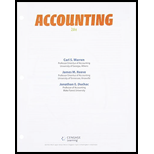
Ethics and professional conduct in business
Tonya Latirno is a certified public accountant (CPA) and staff accountant for Kennedy and Kennedy, a local CPA firm. It had been the policy of the firm to provide a holiday bonus equal to two weeks’ salary to all employees. The firm’s new management team announced on November 15 that a bonus equal to only one week’s salary would be made available to employees this year. Tonya thought that this policy was unfair because she and her coworkers planned on the full two-week bonus. The two-week bonus had been given for 10 straight years, so it seemed as though the firm had breached an implied commitment. Thus, Tonya decided that she would make up the lost bonus week by working an extra six hours of overtime per week over the next five weeks until the end of the year. Kennedy and Kennedy’s policy is to pay overtime at 150% of straight time.
Tonya’s supervisor was surprised to see overtime being reported, because there is generally very little additional or unusual client service demands at the end of the calendar year. However, the overtime was not questioned, because firm employees are on the “honor system” in reporting their overtime.
Discuss whether the firm is acting in an ethical manner by changing the bonus. Is Tonya behaving in an ethical manner?
Trending nowThis is a popular solution!

Chapter 11 Solutions
Bundle: Accounting, Loose-Leaf Version, 26th + CengageNOWv2, 2 term Printed Access Card
- Please Solve This Financial Accounting Question with Correct Methodarrow_forwardGeneral Accountingarrow_forwardNeed help ! Which of the following errors will not be detected by a trial balance?A. Debiting cash instead of accounts receivableB. Recording revenue twiceC. Failing to record a transactionD. A $100 debit matched with a $100 creditarrow_forward
- Financial Accounting 3.1arrow_forwardWhich of the following errors will not be detected by a trial balance?A. Debiting cash instead of accounts receivableB. Recording revenue twiceC. Failing to record a transactionD. A $100 debit matched with a $100 creditneed helparrow_forwardGeneral Accounting Question 2.5arrow_forward
- I will report your answer to Coursehero using chatgpt they block your account and will not give your payment!!! so don't answer with chatgpt. The accounting cycle begins with:A. Posting to the ledgerB. Journalizing transactionsC. Preparing the financial statementsD. Adjusting entriesarrow_forwardWhich of the following errors will not be detected by a trial balance?A. Debiting cash instead of accounts receivableB. Recording revenue twiceC. Failing to record a transactionD. A $100 debit matched with a $100 creditarrow_forwardI need help The accounting cycle begins with:A. Posting to the ledgerB. Journalizing transactionsC. Preparing the financial statementsD. Adjusting entriesarrow_forward
- Hi This Question is Simple I want Answer step by step of this Financial Accountingarrow_forwardNeed help The accounting cycle begins with:A. Posting to the ledgerB. Journalizing transactionsC. Preparing the financial statementsD. Adjusting entriesarrow_forwardNo AI The accounting cycle begins with:A. Posting to the ledgerB. Journalizing transactionsC. Preparing the financial statementsD. Adjusting entriesarrow_forward

 Individual Income TaxesAccountingISBN:9780357109731Author:HoffmanPublisher:CENGAGE LEARNING - CONSIGNMENT
Individual Income TaxesAccountingISBN:9780357109731Author:HoffmanPublisher:CENGAGE LEARNING - CONSIGNMENT College Accounting, Chapters 1-27AccountingISBN:9781337794756Author:HEINTZ, James A.Publisher:Cengage Learning,
College Accounting, Chapters 1-27AccountingISBN:9781337794756Author:HEINTZ, James A.Publisher:Cengage Learning,





